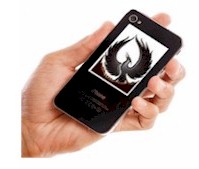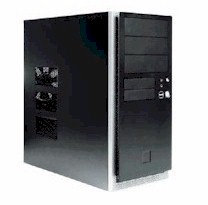|
|
DSC Tech Library
Predictive Dialer
 This section of our technical library presents information and documentation relating to Predictive Dialers and Auto Dialer software and products.
The PACER and Wizard phone systems are PC based call center phone systems that are recognized as premier inbound and outbound computer telephony systems. Features such as automatic call distribution (ACD), interactive voice response (IVR) and call recording have added a new dimension to the predictive dialer and auto dialer capabilities of these systems. These computer based dialing systems can perform various types of auto dialing campaigns simultaneously. These types include Predictive Dialing, Progressive Dialing, Preview Dialing and Dial on Demand.
This section of our technical library presents information and documentation relating to Predictive Dialers and Auto Dialer software and products.
The PACER and Wizard phone systems are PC based call center phone systems that are recognized as premier inbound and outbound computer telephony systems. Features such as automatic call distribution (ACD), interactive voice response (IVR) and call recording have added a new dimension to the predictive dialer and auto dialer capabilities of these systems. These computer based dialing systems can perform various types of auto dialing campaigns simultaneously. These types include Predictive Dialing, Progressive Dialing, Preview Dialing and Dial on Demand.
New Guidelines For Predictive Dialer Use
BY MICHAEL MCKINLAY, SYTEL LIMITED
The telemarketing guidelines for predictive dialers announced by the U.S. Direct Marketing Association (DMA) in January 1999 represent a major step forward for outbound activities in the U.S., and indeed the world, by sending a clear signal that high levels of nuisance calls will no longer be tolerated.
1) Vendor Vs. User Responsibility. Perhaps the most significant aspect of the guidelines is that the responsibility for implementing them falls almost entirely on users, as opposed to vendors. This is not totally unexpected since, given the current lack of agreed standards, the alternative would be to oblige vendors to ship different versions of their software, depending on what dialing guidelines a user was expected to observe. For example, it is not just an issue of DMA members vs. non-DMA members in the U.S., but of different practices among countries to which vendors ship. Well, that is the argument for now.
2) Nuisance Calls And Abandoned Calls. The heart of the guidelines are the stringent limits the DMA has set on nuisance calls. Vendors and users alike talk about both nuisance calls and abandoned calls as the things dialers do, in seeking performance improvements. They are not the same; abandoned calls being just a subset of nuisance calls. What the guidelines set out to do primarily, and admirably, is not just to limit abandoned calls, but to curtail nuisance practices that dialers have resorted to in the past, specifically what we refer to in the table as "predictive hang ups" and "call delays." These are practices that dialers have indulged in to gain extra productivity, whilst avoiding having to hang up on a live party and declare an abandoned call.
3) Impact On Nuisance Calls And Productivity. Sytel recently conducted some research in the U.S. to determine the current level of nuisance calls. The sample size was small and hence open to significant variance. Nevertheless, our results suggested that for every 100 live outbound calls made to consumers in the U.S., there might be approximately 50 nuisance calls of all kinds.
If this is true, then effective implementation of the guidelines in the U.S. could result in at least a tenfold reduction in nuisance calls. Given that predictive performance and the level of nuisance calls are clearly linked, how can it be that such a large reduction in nuisance calls would leave much room at all for achieving performance gains from predictive dialing? The response is:
- There is a law of diminishing returns at work in predictive dialing, in that the more nuisance calls that are made (of all kinds), the less the additional benefit in terms of higher agent talk time per hour or lower wait times between calls.
- It is quite likely that the way some dialers are being used means that nuisance calls do little for productivity, meaning that a reduction in them may not be noticed.
Although probably unintended, the guidelines make dialer efficiency a real issue. So expect to see a lot more serious discussion in the future on what's good (and bad!) in predictive dialer design.
4) Future Impact. Outside the U.S., the U.K. led the way five years ago with its code of practice, and several other countries have followed suit (e.g., South Africa). Many countries have yet to address these issues, so don't be surprised to see the U.S. guidelines providing a model for widespread adoption internationally. If and when that happens, expect the onus of compliance to fall squarely upon vendors. Otherwise, if users are free to make their own choices, then some, unwittingly or otherwise, may choose less rigorous standards than those recommended in the guidelines.
The DMA has made a bold move, and the outbound market in the U.S. and elsewhere can only benefit if the beachhead of these guidelines is both sustained and, in due course, extended.
Michael McKinlay is the managing director of Sytel Limited, a U.K. company which specializes in outbound software and supplies its soft predictive algorithms to some of the world's leading call center vendors. Sytel has campaigned consistently in all major markets for self-regulation of dialers and was a key adviser to the U.S. DMA in the formulation of its guidelines.
Auto Dialer
DSC offers an affordable entry level auto dialer phone system that utilizes analog phone lines. This 4 line auto dialing system includes our WIZARD dialer and softphone or comes optionally with our comprehensive software development toolkit.
Predictive dialing campaigns can be developed using our WIZARD software setup utility or we can provide you with a custom predictive dialer campaign. These applications can be easily ported to our digital T1 phone system (PACER) when your call volume requires a larger system.
Phone dialing campaigns can be quickly developed that call numbers from a phone list and when contact is made with an individual, the call can be routed to your online agent or to a work from home employee. If an answering machine is detected, a different message could be left on the machine.
This entry level auto dialer can be easily expanded by adding additional agent lines and software to support a small call center operation including complete CRM applications.
DSC provides voice broadcast software including our wizard development tool for creating voice broadcasting applications. This wizard guides you through each step when defining your outbound phone applications. Comprehensive dialing applications can be developed quickly. Simply record your phone prompts and fill in the blanks.
|
|
|


 This section of our technical library presents information and documentation relating to Predictive Dialers and Auto Dialer software and products.
The PACER and Wizard phone systems are PC based call center phone systems that are recognized as premier inbound and outbound computer telephony systems. Features such as automatic call distribution (ACD), interactive voice response (IVR) and call recording have added a new dimension to the predictive dialer and auto dialer capabilities of these systems. These computer based dialing systems can perform various types of auto dialing campaigns simultaneously. These types include Predictive Dialing, Progressive Dialing, Preview Dialing and Dial on Demand.
This section of our technical library presents information and documentation relating to Predictive Dialers and Auto Dialer software and products.
The PACER and Wizard phone systems are PC based call center phone systems that are recognized as premier inbound and outbound computer telephony systems. Features such as automatic call distribution (ACD), interactive voice response (IVR) and call recording have added a new dimension to the predictive dialer and auto dialer capabilities of these systems. These computer based dialing systems can perform various types of auto dialing campaigns simultaneously. These types include Predictive Dialing, Progressive Dialing, Preview Dialing and Dial on Demand.
